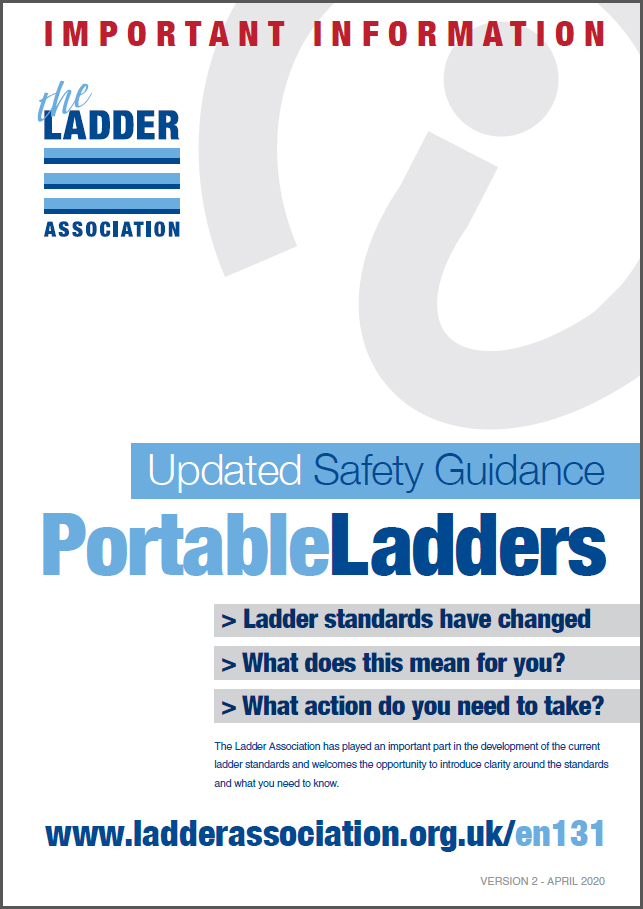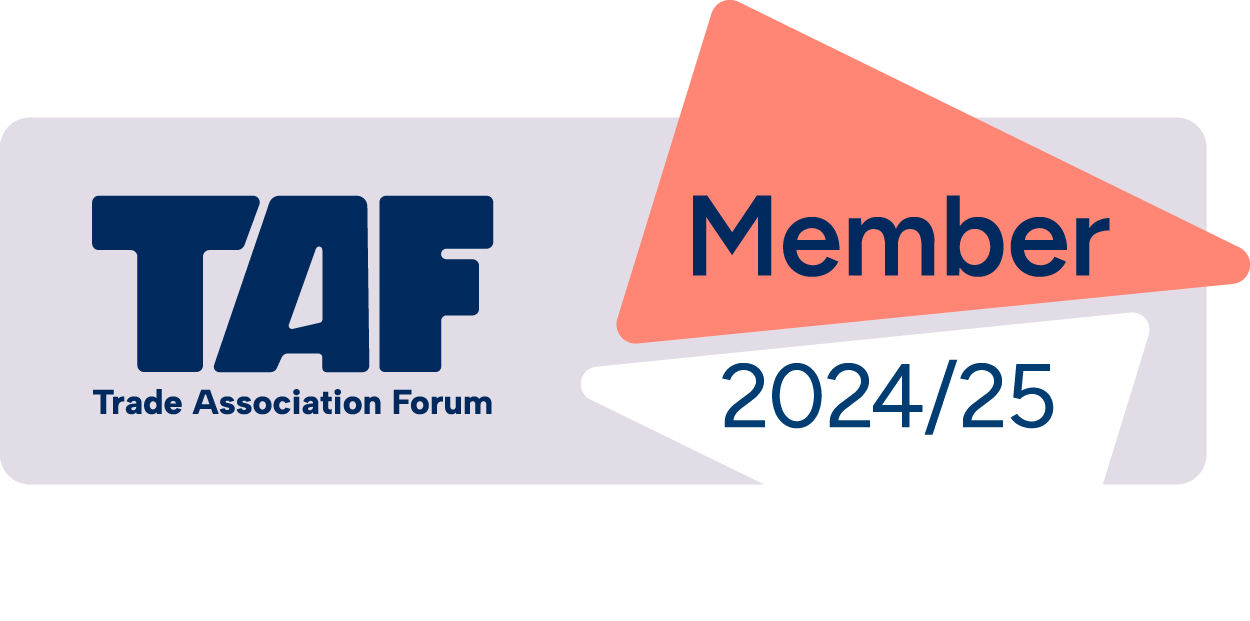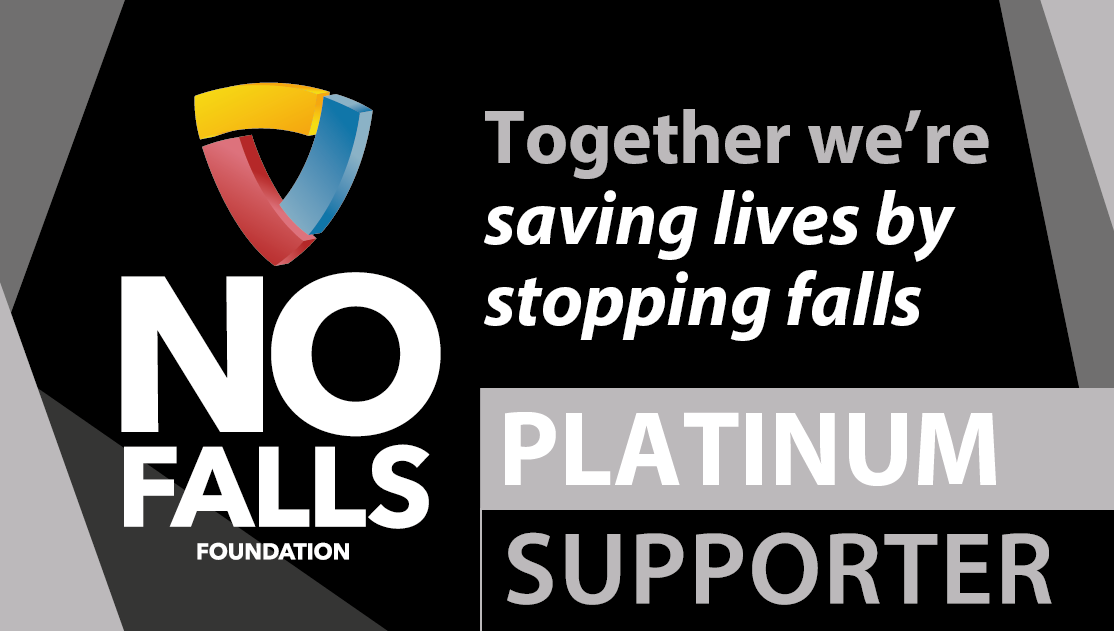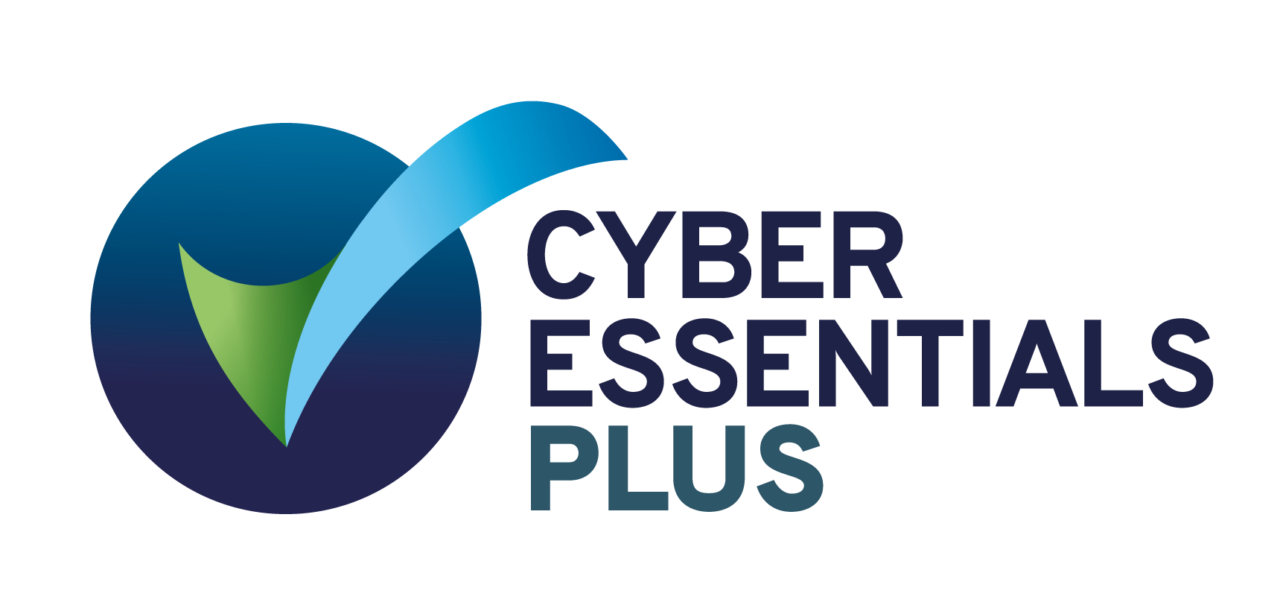Are you up-to-date with current Ladder Standard EN 131?
BS EN 131 (the UK’s version of EN 131), the single British & European product standard covering all types of portable ladders (step, extending and combination) was substantially revised and came into force in January 2019.
EN 131 improves ladder safety by making ladders wider, stronger and sturdier.
British Standards BS 2037 and BS 1129 (often referred to as Class 1 and Class 3 ladders) are no longer available and you can no longer buy ladders made to these withdrawn standards.
All ladders should now be designed and manufactured to the current EN 131 standard only.
You can find further information on all current ladder standards on our Standards Webpage >

Download our latest EN 131 Guidance
To help clarify the changes that took place with EN 131, we have developed ‘Safety Guidance on Portable Ladders’. This guidance includes:
– The key changes
– Features of ladders manufactured to the new standard
– Advice for businesses and users on buying ladders
– We answer your questions on current equipment and re-training.

EN 131- Frequently Asked Questions
Has the load changed on a new EN 131 ladder?
To meet the revised EN 131 standard, ladders are designed and tested to take a maximum total load* of 150 kg including the user, their tools, equipment and any materials. *Maximum Total Load: the maximum weight the ladder is designed to support when set up in accordance with the manufacturer’s instructions.
What is the difference between EN131 Professional and Non-Professional Ladders?
Although ladders approved to the revised EN 131 standard carry the same load rating, Professional ladders are subject to tougher durability requirements, because they are expected to be subjected to more onerous use.
Ladders for professional use: These ladders are the most durable, having been designed to withstand more demanding conditions. They’re intended to be used at work, but there’s no reason you can’t use them at home too.
Ladders for non-professional (domestic) use: These ladders are intended for lighter, occasional use. They should only be used for home DIY, and never in any professional/work setting.
When did the new EN131 take effect?
The revised EN131 Ladder standards are already published. The parts of the British standards, BS1129 and BS 2037, which relate to ladders and stepladders have been withdrawn because we cannot have British Standards which conflict with European Standards.
Can I still use my current ladders?
If you have ladders that were compliant with the obsolete and withdrawn standards you may continue to use them if they are still in good condition – that’s because standards are not retrospective. But, when those ladders are worn out or damaged and need replacing, or if you need to purchase more ladders, you should only buy ladders which meet the latest EN131 standard.
What should I do now?
For business users, we recommend updating your procurement policies to ensure all future new and replacement ladders comply with the revised EN 131 standard.
For ladder users in the home, when purchasing new ladders or replacing existing ones, you could buy either EN 131 Non-Professional or Professional ladders – it’s up to you. Non-Professional ladders should be perfectly adequate but you might want to consider spending a bit extra to buy a Professional ladder.
Do I need re-training?
You don’t need re-training to use the new style ladders (compliant with the current EN 131 standard).
If you haven’t had ladder training, Ladder Association training equips people to understand the essential points about safe use, handling and storage of ladders, together with potential hazards of their use.
You should always make sure that people with sufficient skills, knowledge and experience are employed to perform the task, or, if they are being trained, that they work under the supervision of somebody competent to do it.
The LadderCard is an effective and widely recognised way of showing proof of training for work at height from ladders and can help you to demonstrate competence as required by the Work at Height Regulations.








